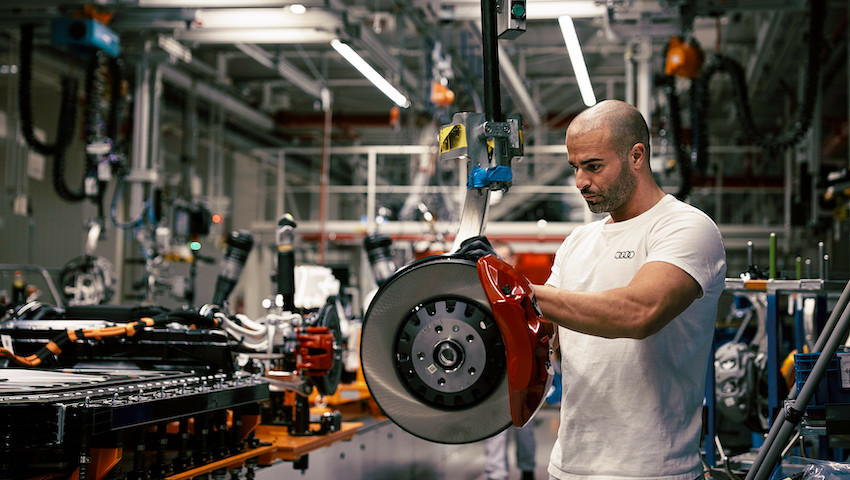Audi outlines production targets for electric future
Audi has confirmed plans to only release electric models from 2026, whilst it also intends to phase out production of combustion vehicles by 2033.
Based on the decision made as part of its Vorsprung 2030 corporate strategy, Audi is now taking steps to prepare its global facilities for the production of all-electric cars.
By the end of the decade, Audi will be making electric-drive models at all of its production sites worldwide. Two sites, Böllinger Höfe and Brussels, are already producing all-electric vehicles. Starting next year, the Audi Q6 e-tron will be the first all-electric model to roll off the production line in Ingolstadt and production of all-electric cars will gradually start in Neckarsulm, San José Chiapa, and Győr as well. In 2029, all production sites will be producing at least one all-electric vehicle model. Depending on local conditions, production of the remaining combustion models will be gradually phased out by the beginning of the next decade.
New plants will only be built where additional capacity is needed. For example, Audi and its partner FAW are currently building a site in Changchun (China) where models based on the PPE (Premium Platform Electric) technology platform will be locally produced. With construction set to finish by the end of 2024, this will be the first automotive plant in China where only all-electric Audi models roll off the line.
“Step by step, we are bringing all our sites into the future,” said Audi Board Member for Production and Logistics Gerd Walker. “We don’t want any standalone lighthouse projects on greenfield sites. Instead, we are investing in our existing plants so they end up being just as efficient and flexible as newly built production sites or greenfield plants.”
“We will use the transition to e-mobility to make major leaps in productivity and optimization by making the necessary modifications,” added Walker.
Once it is equipped for the future, Audi’s production network is intended to be economical, sustainable, and attractive as well as flexible. Four central goals with ambitious key figures: To ensure that future production will be economical, Audi wants to cut annual factory costs in half by 2033. To achieve this, Audi plans to reduce the complexity of its vehicles where it does not benefit the customer – to this end, vehicle development will take a streamlined production process into account from stage one.
The premium manufacturer will also continue to digitalize production, for example, with the Edge Cloud 4 Production solution using local servers. This will make it possible to replace expensive industrial PCs, reducing IT efforts such as software rollouts and operating system changes. In the future, Audi will also be using another new solution – cycle-independent modular assembly – to simplify work with high product variability. Virtual assembly planning saves material resources and makes innovative, flexible collaboration possible across locations.
To ensure the manufacturer will be able to respond more flexibly to fluctuations in customer demand or production program, Audi will make its manufacturing processes even more flexible. “We want to structure both product and production so we get the optimum benefit for our customers,” says Walker. To this end, the new Audi Q6 e-tron, for example, will initially be made in Ingolstadt on the same line as the Audi A4 and A5. The electric models will then gradually replace the combustion cars on the lines.
By 2030, Audi also aims to cut its absolute environmental impact in the areas of primary energy consumption, power plant emissions, CO2 equivalents, air pollutants, local water risk, and wastewater and waste volumes in half, compared with the 2018 figure.






